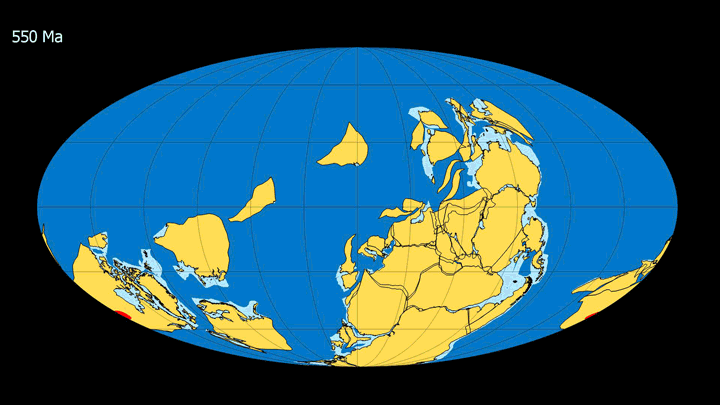So... Did the plates separating allow the mid-Atlantic upwelling, or did the upwelling cause the super-continent (Pangea) to break up, then subsequently push the continental plates apart?
I believe the general consensuses is now that the upwelling caused the initial tectonic separation, but that its continuation at least in part has more to do with the plates diving down into the mantle at the other end of the plates. In other words, the down-going slab is acting to pull the plate away from the spreading center at the opposite end of the plate.
India certainly has done some real scooting around.
Yes, it moved relatively quickly (in plate tectonic terms) for a few millions years, prior to its slow-motion collision with Asia. That collision produced the Himalayan mountains. They continue to rise to this day.
Why was all the land concentrated on one side of the earth for a long time?
In geologic time, they actually weren't together for that long at time at all. Super-continents are inherently unstable because they act as 'heat blankets', allowing the heat from the earth's interior to build up underneath and eventually poke holes in the landmass. The last supercontinent, Pangaea, finished completion around 250 million years ago when Africa collided with North and South America. It then began separating "only" about 50 million years later. That is not all that long a time in geologic terms.
It would be great if the animation showing Pangea’s breakup and subsequent continental drift was slower and had a geologic “clock” running with it. And, maybe a one frame flash at the end could denote humans’ time on this rock.



India slamming into Asia, creating the Himalayan mountains (~50 million years ago to present).

You can see India moving north at a relatively fast speed.